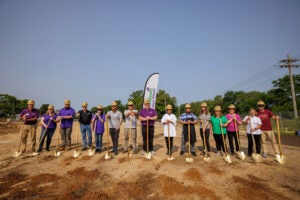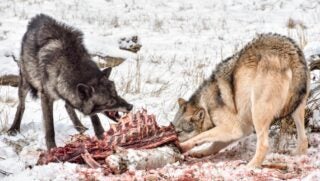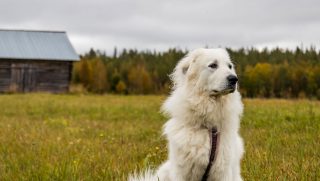Indiana-based food-security organization Cultivate Food Rescue celebrated a big achievement this week when it officially broke ground on a state-of-the-art cold storage facility. The 22,000-square-foot facility in South Bend will allow the nonprofit to exponentially grow its capacity for rescuing perishable food across Northern Indiana.
The facility should be operational by the summer of 2024. With it, Cultivate will be able to rescue 19 million pounds of food annually; it can only handle 1 million with its current setup.

As a board member — not to mention early fan — of Cultivate, this was a proud day. When I first met with Jim Conklin, now Cultivate’s executive director, and Todd Zeltwanger, Cultivate’s chief financial officer, back in 2018, Cultivate was operating out of an old medical facility. At that time its focus was on packaging weekend meals for local school kids who may not otherwise get nutritious meals on Saturday and Sunday. Although the surroundings were humble, the passion radiating from Jim and Todd was infectious.
It didn’t take long for Cultivate to move into its current facility. The building houses a large refrigerator, a walk-in freezer, a commercial kitchen, and areas where volunteers can package and prepare meals for distribution. The larger space has allowed Cultivate’s impact to grow, and now the organization has rescued over 4 million pounds of food, and delivered almost 1,00,000 meals.
Aside from its surroundings, the mission has changed a bit too. Although Cultivate still runs its popular backpack program supplying meals for children, it’s also now a clearinghouse for more than 100 food pantries to obtain rescued food and distribute it to hungry adults. It utilizes an online portal where these banks are able to “order” available food. Unsurprisingly, the need is so great that food items are quickly snatched up. That’s one reason the new cold-storage facility will have such a great impact — it will boost Cultivate’s ability to rescue food from landfills and meet the needs of our hungry neighbors.

I’d be remiss if I didn’t mention the environmental impact of Cultivate’s mission. Food rotting in landfills is a source of greenhouse gas emissions, and that’s not even considering the inputs necessary to produce all of that food. Cultivate makes the entire food system more efficient by reducing waste and making sure more food is actually eaten.
Both of those pillars support the slogan chosen by Cultivate’s board of directors last summer: No neighbor hungry. No food wasted. It’s both a mission statement and a goal for our community.
Unfortunately, food insecurity isn’t a problem confined to Northern Indiana. As Jim said during the groundbreaking ceremony, there are food insecure people in 100 percent of U.S. counties. There isn’t a single place untouched by this problem. And that’s not surprising when the U.S. wastes around 40 percent of the food it produces.

But here’s an open secret: Cultivate’s food-rescue model isn’t limited to Northern Indiana. Sure, our community has countless people who generously give their time, treasure, and talents. And so do other communities outside Cultivate’s geographical reach. It’s possible for food-rescue organizations to set-up shop in places throughout the United States (and maybe even the world).
Reducing food waste won’t fix all the looming problems of our time. But it’s certainly a good start that all of us can actively support. If you’re interested in donating to Cultivate’s capital campaign, please visit this website.
Amanda Zaluckyj blogs under the name The Farmer’s Daughter USA. Her goal is to promote farmers and tackle the misinformation swirling around the U.S. food industry.



